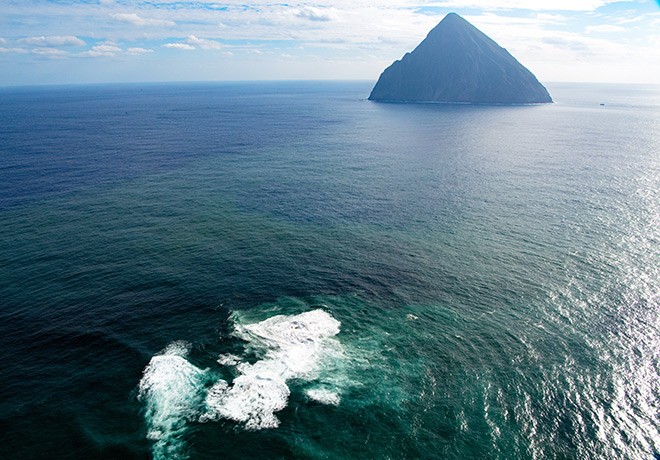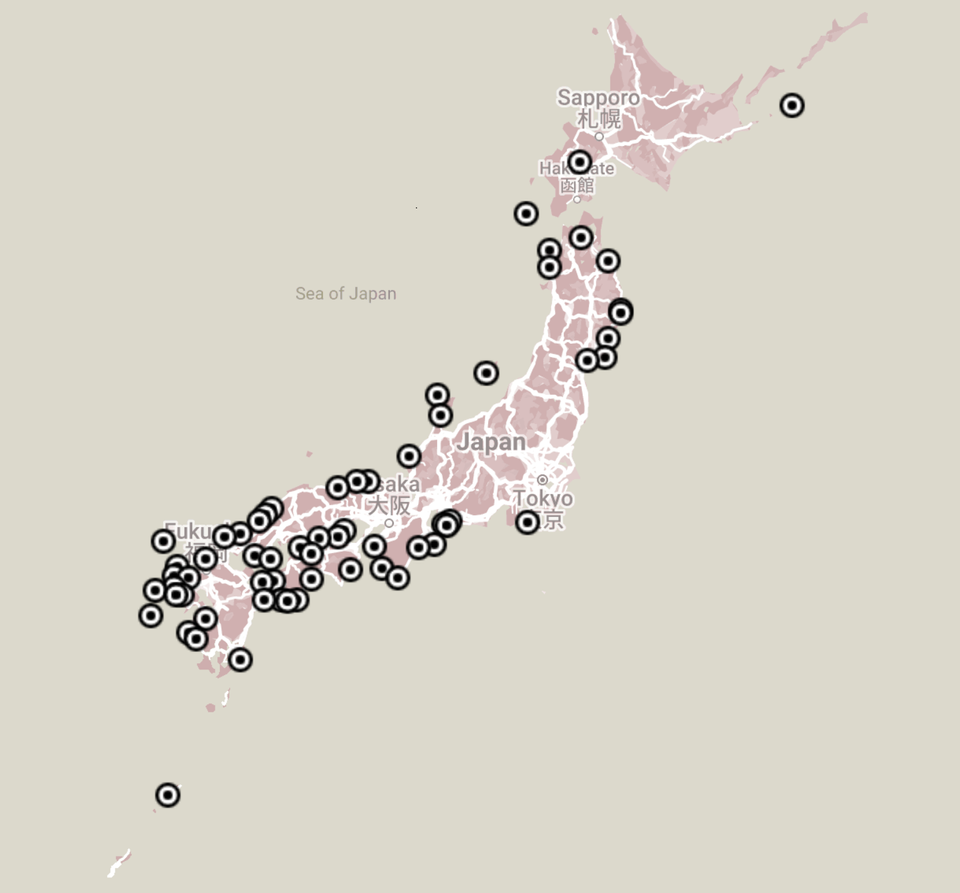Japan is an island nation consisting of over 14,125 individual landmasses. Of these thousands of islands and islets, many are completely uninhabited, but many are also not without names. Upon close inspection of the complex Japanese coastline, one will discover several dozen different islands all with the same name, 大島 (Ōshima). This begs the question:
How many islands in Japan share the name 'Ōshima'?
What is an Ōshima?
The name 'Ōshima' literally means 'Big Island' or 'Large Island' which is quite endearing, considering that many of the Ōshima are actually quite small. Nevertheless, at one point or another in history many separate communities all across Japan presumably gazed out upon their respective local horizons, picked out the biggest island they could see and named it 'Ōshima'. In many cases these hypothetical historical toponymists were likely unaware of the ubiquity of the name. Today, these names remain as an intriguing insight into the minds of our ancestors.
Project Objective
The Ōshima Project's primary objective is to identify, visit, catalogue, and study every single island in the Japanese archipelago named Ōshima, and the surrounding locales. To date, at least 63 Ōshima have been identified, and the project has mapped them here. There may be more! Note that the Ōshima Project's island numbering scheme is used only by the Project as a convenient means of differentiating the Ōshima from one another and that the numbering is not officially recognized. Generally, the islands are numbered by way of latitudinal order from north to south.
As a foreigner undertaking this project, 大島さん (Ōshima-san) hopes to gain a greater appreciation for the diversity of geographic locations, experiences, and cultures spread across Japan as they journey to each point on the map.
This site serves as a travel diary, photo gallery, and atlas of the myriad Ōshima that 大島さん has visited and chronicles their journeys to each 'Big Island' in Japan.
The Ōshima Project is an independent publication launched in December of 2024 by 大島さん, though their journeys across Japan began a few years prior.
Sources:





